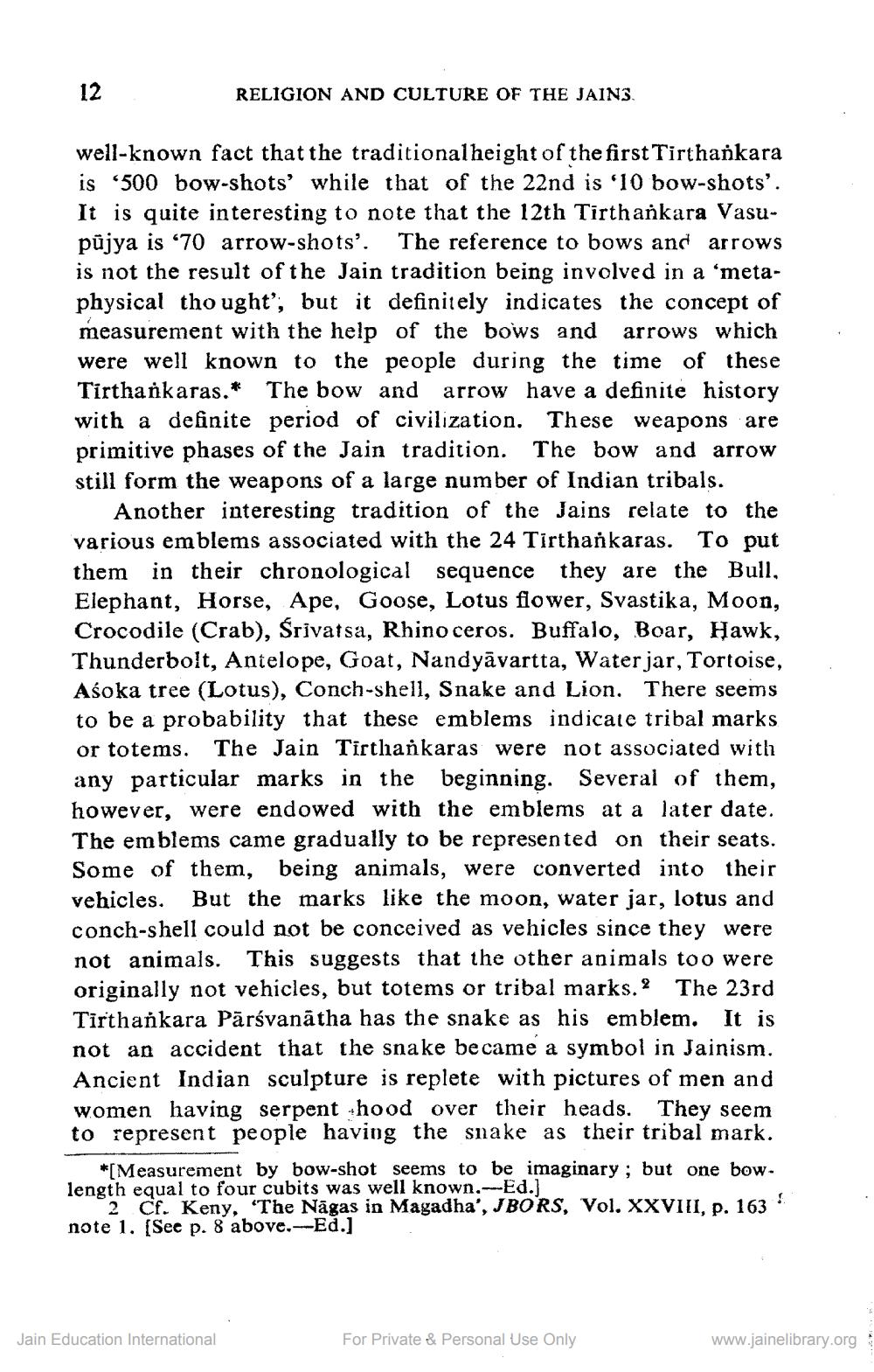________________
12
RELIGION AND CULTURE OF THE JAINS.
well-known fact that the traditional height of the first Tirthankara is '500 bow-shots' while that of the 22nd is '10 bow-shots'. It is quite interesting to note that the 12th Tirthankara Vasupujya is '70 arrow-shots'. The reference to bows and arrows is not the result of the Jain tradition being involved in a 'metaphysical thought', but it definitely indicates the concept of measurement with the help of the bows and arrows which were well known to the people during the time of these Tirthankaras.* The bow and arrow have a definite history with a definite period of civilization. These weapons are primitive phases of the Jain tradition. The bow and arrow still form the weapons of a large number of Indian tribals.
Another interesting tradition of the Jains relate to the various emblems associated with the 24 Tirthankaras. To put them in their chronological sequence they are the Bull, Elephant, Horse, Ape, Goose, Lotus flower, Svastika, Moon, Crocodile (Crab), Śrivatsa, Rhinoceros. Buffalo, Boar, Hawk, Thunderbolt, Antelope, Goat, Nandyāvartta, Water jar, Tortoise, Aśoka tree (Lotus), Conch-shell, Snake and Lion. There seems to be a probability that these emblems indicate tribal marks or totems. The Jain Tirthankaras were not associated with any particular marks in the beginning. Several of them, however, were endowed with the emblems at a later date. The emblems came gradually to be represented on their seats. Some of them, being animals, were converted into their vehicles. But the marks like the moon, water jar, lotus and conch-shell could not be conceived as vehicles since they were not animals. This suggests that the other animals too were originally not vehicles, but totems or tribal marks.2 The 23rd Tirthankara Pärśvanatha has the snake as his emblem. It is not an accident that the snake became a symbol in Jainism. Ancient Indian sculpture is replete with pictures of men and women having serpent hood over their heads. They seem to represent people having the snake as their tribal mark.
*[Measurement by bow-shot seems to be imaginary; but one bowlength equal to four cubits was well known.-Ed.]
!
2 Cf. Keny, "The Nagas in Magadha', JBORS, Vol. XXVIII, p. 163 note 1. [See p. 8 above.-Ed.]
Jain Education International
For Private & Personal Use Only
www.jainelibrary.org




